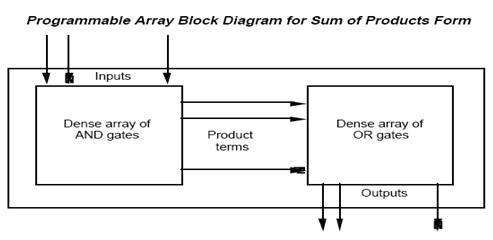Explain the Fixed Logic Versus Programmable Logic?
The Logic devices can be classified into two broad categories - fixed and programmable. The same as the name suggests, the circuits in a fixed logic device are permanent, they perform one function or set of functions - once manufactured, they cannot be changed. On the other side, programmable logic devices (PLDs) are standard, off-the-shelf parts that offer customers a wide range of logic capacity, features, speed, and voltage characteristics - and these devices can be changed at any time to perform any number of functions.
With fixed logic devices, the time necessary to go from design, to prototypes, to a final manufacturing run can take from several months to more than a year, depending on the complexity of the device. And if the device doesn't work correctly or if the requirements change a new design must be developed.

With programmable logic devices, designers use inexpensive software tools to quickly simulate, develop, and test their designs then, a design can be quickly programmed into a device, and immediately tested in a live circuit. The PLD that is used for this prototyping is the accurate same PLD that will be used in the final production of a piece of end equipment, such as a network router, a DSL modem, a DVD player, or an automotive navigation system. Thus the development cost can be reduced.
Another major benefit of using PLDs is that during the design phase customers can change the circuitry as often as they want until the design operates to their satisfaction. That's for the reason that PLDs are based on re-writable memory technology - to change the design, the device is simply reprogrammed. Formerly the design is final customers can go into immediate production by simply programming as many PLDs as they need with the final software design file.
PLD is an integrated circuit with internal logic gate that are connected by electronics fuses. Programming signifies blowing of fuses.